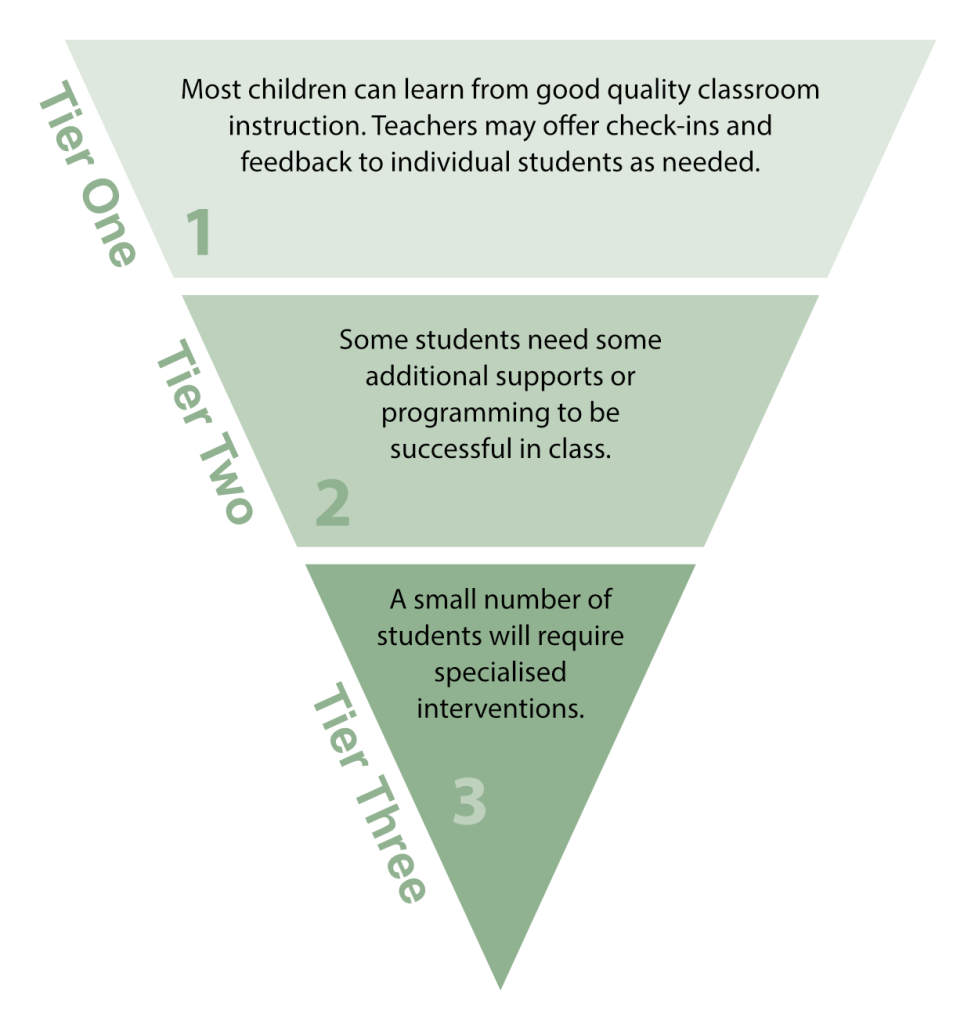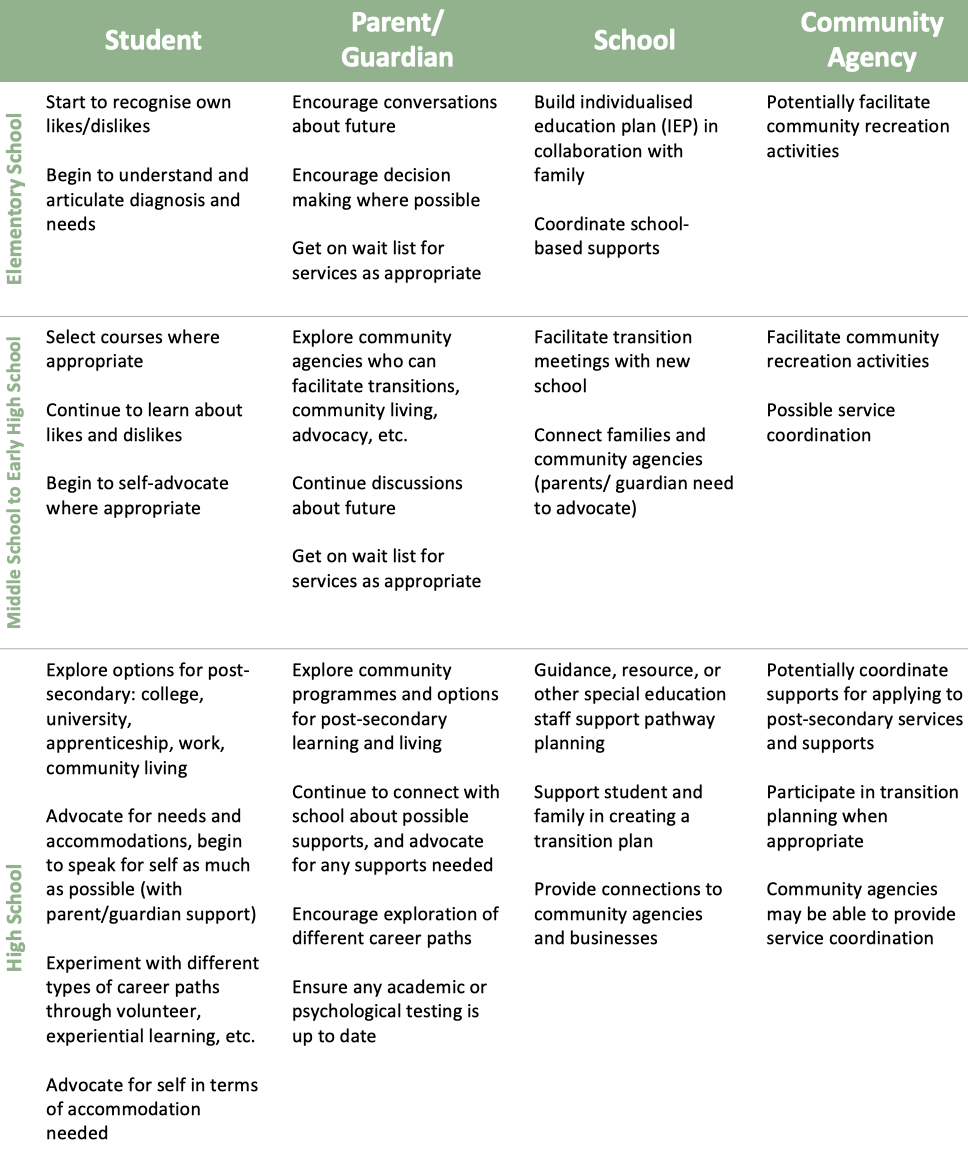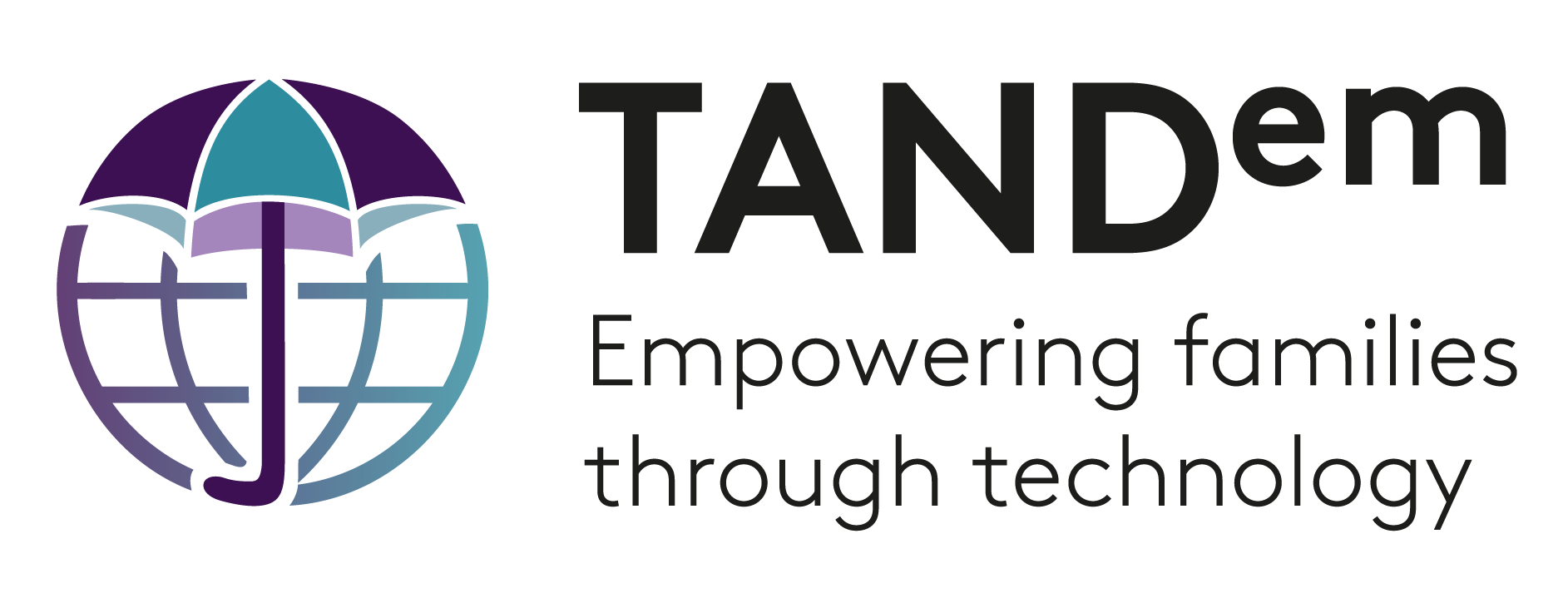Scholastic Cluster
Home > TAND Clusters > Scholastic > What to do
What to do
Tips for working with your child's education team
- Connect with your child’s education team – open lines of communication are essential. If things aren’t working, and your child is not happy, speak up!
- Have frequent meetings with the school team – you don’t need to wait for formal reporting times to meet!
- Share any and all reports and assessments with your child’s school. If you have had assessments done outside of school, for example with Occupational Therapy, cognitive assessments, psychological educational assessments, etc., they can help the school to better programme for your child.
- Educate yourself on your child’s rights in education, and what is available for them.
- Focus on your child’s strength, starting with the positives and help keep things in perspective.
- Set realistic goals for your child.
- Share interests and likes with your child’s school, preferred items and activities – this can help the school programme for your child.
- Share information about TSC with the school – remember they have likely never heard of TSC!
Working with your school
Work with your child’s school to ensure the best possible educational experience for them. Seek a meeting with your child’s education team (teacher, educational assistant, special education resource teacher, principal, etc.) to discuss your and your child’s goals and current programme. If your child has an IEP, discuss the document and its implementation with the team.
Regardless of the placement, reach out to your school. Open lines of communication are very important. Establishing relationships with your education team can help in advocating for your child. If you feel your child is not getting the supports they need for their success, advocate for what you feel is needed. You can speak to the classroom teacher, the special education resource teacher, the principal or vice principal. In many school districts, there may be other professionals involved in your child’s education, for example, an occupational therapist, speech and language pathologist, behaviourist, etc. These important members of your education team may also be part of team meetings to communicate with you about how to support your child at home.
Advocating for your child
Sometimes you may have a situation in which the school may not be implementing the IEP fully, or may not be supporting your child as much as they need. In these cases, don’t be afraid to speak up for and advocate for your child. You know your child best, and you have an important role to advocate for their needs in school. If you need help, reach out to your local TSC organisation for support.
Supporting scholastic skills
In general, an effective approach to instruction for students who are struggling is a Response to Intervention (RTI) approach. This approach looks at all children in an educational setting, and sees most children responding well to Tier One instruction, which is essentially good instructional practice responding to individual student needs as required. A smaller number of children will require Tier Two intervention, which are additional targeted supports or programming, many of which could be implemented in the classroom, perhaps with the support of a special education teacher. A small number of students will require Tier Three interventions in order to be successful. These interventions are specialised, and often require someone trained in special education to support. Work with your school to understand where your child may be in terms of needs and interventions, as well as which interventions they may be implementing.

Reading
Depending on your child’s placement and goals for their education, what you can do with your child will vary. If your child enjoys it, the best thing to do is to read often to and with your child. This can help them develop their vocabulary and increase their reading skills. Look for environmental print to read with your child as well, such as signs for restaurants, brands or stores. Street signs and packaging on food can also be used for shared reading opportunities.
If your child is reading, a good rule of thumb for picking the correct level of reading material is if the child can read a page with under five errors, it may be the right level for them. If they are making more than five errors per page, it might be too difficult for them to read. Reading material can be anything that interests your child. Graphic novels can be high interest, low vocabulary options for some students. Other choices could be comics, magazines, whatever is motivating for your child.
Enhance communication with your child by adding on to what they say or indicate interest in. For example, if your child points at something of interest, name the item and talk about it. If your child says single words, answer with sentences. In this way you are extending their communication skills. More ideas can be found at ‘Reading Rockets’ in the resource panel.
Reading Rockets
[readingrockets.org]
Writing and spelling
When students are writing, there are two main areas they can potentially struggle. The first is with composition, which means they have difficulty creating written pieces. They may struggle with sequence, clarity, coming up with a logical written piece that makes sense. To support these difficulties, it is important to spend lots of time orally sharing ideas and sequencing events. Ask your child to tell you about things that have happened, to recount events or experiences. Spend time brainstorming ideas first, perhaps with the help of a graphic organiser to help get ideas into a logical flow. Reading written pieces out loud can help your child to identify areas that are unclear or do not make sense. Writing assignments that are in point form rather than paragraphs may work for some children. Many students who struggle to write benefit from computer programs that can turn speech to text.
Another area of potential difficulty is in spelling. Providing these students access to a list of common words can help students to create written pieces. Focus on spelling patterns and common high frequency words. A word processor or other tech tool such as a tablet, can be an essential programme for students who struggle to spell.
Mathematics
Depending on your child’s goals for mathematics, you may be working to support very different concepts. You can work to develop early mathematics skills by looking for authentic opportunities to count with your child, for example while setting the table. Ask your child to count out the cutlery, or count aloud while you set the table etc.
Talk about math a lot as a family. As you are out in the community or in your home count, talk about more and less, bigger and smaller, show your child small collections of everyday items very briefly and get them to say how many they see. Talk about your strategies for figuring math questions out. Repetition is extremely important for students who struggle to understand mathematical concepts, but balance this with having fun. Making math fun is often more effective than using a lot of drill.
Children may have difficulty memorising facts such as multiplication tables or additional facts. Some students may benefit from the use of a calculator or a table of facts to refer to while they work.
There are some online games that might help consolidate basic math concepts. In the resource panel there are two examples of online games to support learning.
The Parent’s Guide to Prodigy Math
[prodigygame.com]
Boddle: a Math Game They Won’t Stop Playing
[boddlelearning.com]
Homework
For children in regular classroom settings, with or without extra support, many families report challenges with things like homework. Work with your school and classroom teacher if homework is too difficult or is causing too much stress at home. Your school may be able to offer modified work for home, or an exemption from homework all together if it is becoming a negative experience. It is important to make homework a pleasant experience whenever possible. Try turning tasks into a game, or using fun pencils or paper to motivate your child. Offer frequent breaks, and chunk the homework into manageable pieces. Checklists often work well to break up tasks so that your child can see their progress.
Transitions
Start planning for transitions both large (like from elementary to high school, or high school to beyond) and small (like from class to class, school year to school year or even school to home) early. Seek out resources from the school to help plan for these transitions. For some students, things like visual schedules can help with minor transitions, and for larger ones, advance visits to new classrooms or teachers or schools can be helpful. The table below will give you helpful suggestions for important school transitions, and the resource panel has helpful tips for transition into adulthood.
Advocacy in the Education System for Transition into Adulthood
[tscalliance.org]




